Yonderberry Oil and Petroleum Supply Jetty
Thanckes Oil Fuel Depot
Thanckes Oil Fuel Depot is managed by the Oil and Pipelines Agency which operates six Oil Fuel Depots (OFDs) around the United Kingdom. Gosport and Thanckes OFDs are located in southern England and support the adjacent HM Naval Bases, Portsmouth and Devonport respectively. The four remaining OFDs are located in Scotland. The Scottish site at Garelochhead supports its adjacent Naval base, whilst Loch Striven, Loch Ewe and Campbeltown provide bulk storage and regional support to visiting Royal Navy and NATO warships and Royal Fleet Auxiliary tankers.
The site is on a peninsular of 97 acres on the west bank of the Hamoaze - the broad tidal estuary of the river Tamar - just north of Torpoint, Cornwall. It holds up to 138,000 cubic metres of high flashpoint fuel for HM ships and other customers.
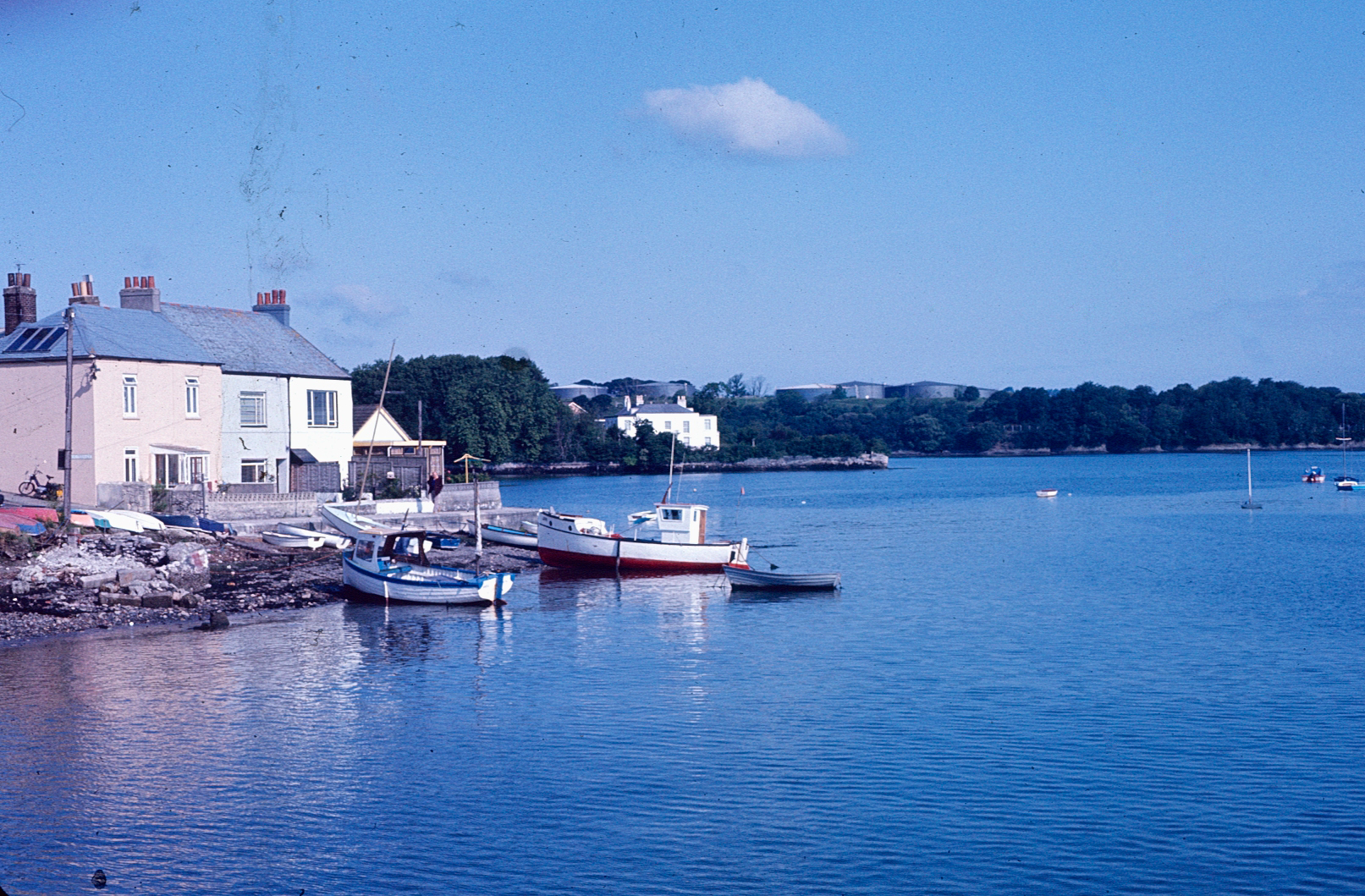
In August 1979, the tanks of Thanckes depot were more visible from the Torpoint Ferry than they are today because of the shielding from trees that have grown taller over the years.
The new jetty
On 24 October 2017 the Western Evening Herald reported the award of a £43 million contract to VolkerStevin. The company would be the managing contractors, sub-contracting different parts of the work to other companies considered to be most appropriate in their own fields.
Dredging work was carried out by Jenkins Marine.
Blackhill engineering were chosen to be the contractor for supply of the large steel structures.
"Exeter-based Blackhill Engineering has a double overhead gantry crane with a safe working load of 40 tonnes plus 20 tonnes in tandem lift. This capability, which it describes as 'unique in the southwest', allows safe loading of structures up to 25 metres long. Blackhill fabricated 15 sacrificial casings measuring up to 18 metres long with a diameter up to 2.3 metres and weighing up to 23 tonnes each. These will be embedded into the rock strata of the River Tamar to form stanchions supporting the jetty head structure. Blackhill is also fabricating dolphin tops, rails, frames and access equipment."
History
There is little published history relating to Thanckes Oil Fuel Depot. Some of what follows is due to research by Brian Moseley, published in 2017 on his website of Old Devonport, unfortunately without references.
Work on the depot began in April 1921, a site that was once part of the historic Thanckes House estate and home to Admiral Lord Graves (1725-1802). As can be seen from the drawing below, twenty-eight tanks were constructed, a curious mix in which ten were built by Messrs Motherwell Bridge & Co, ten were built by Messrs Clayton & Co of Leeds and eight more were built by the Admiralty.
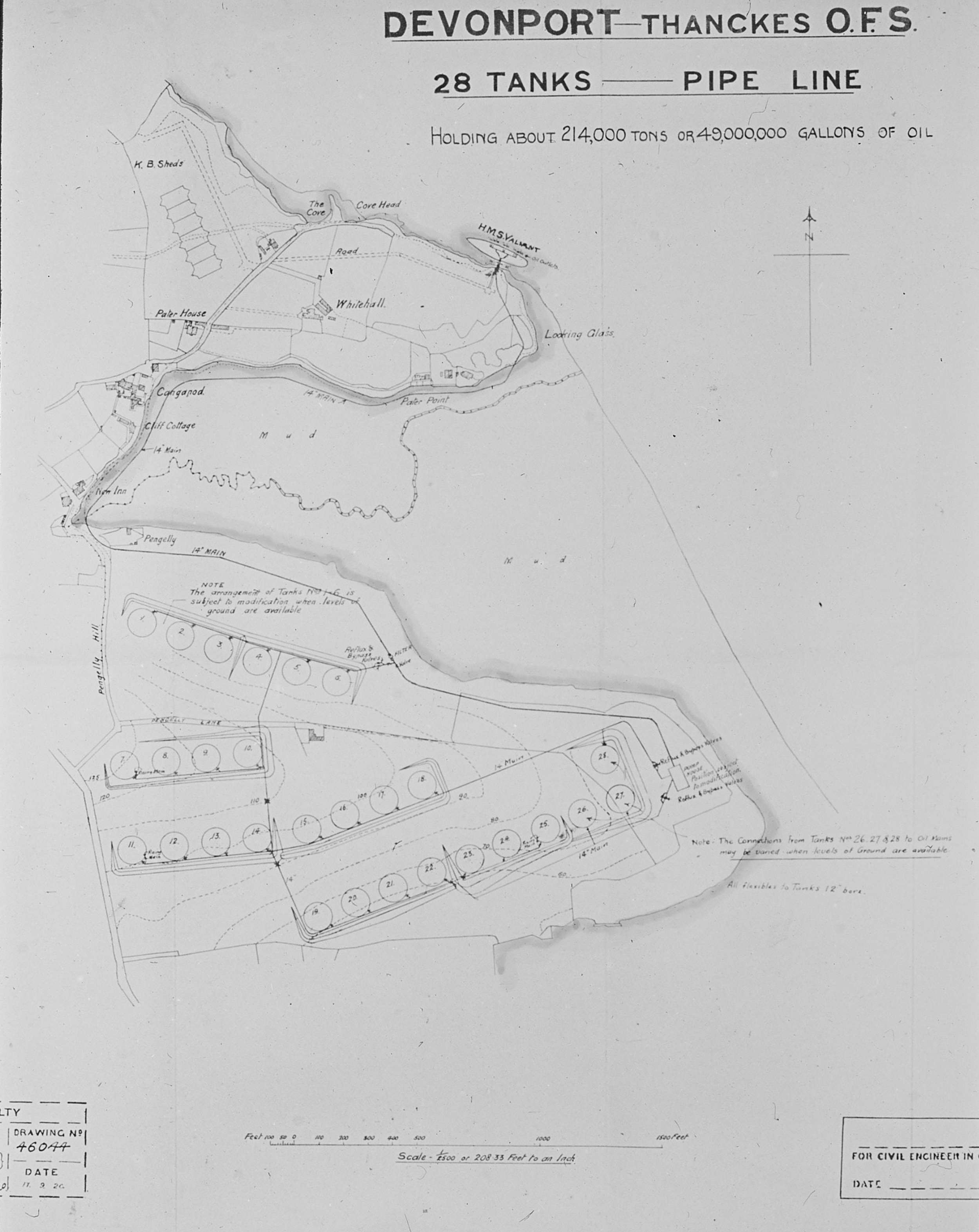
Above is the original drawing dated 17 Sep 1926 for the supply of fuel for the Royal Navy from Thanckes Oil Fuel Depot. Of particular interest is the presence of a building situated within the OFD just to the right of tank 10, at the end of the indicated Pengelly lane. It is believed that this site is the location of one of the earliest houses on the Rame peninsula and is of significant historic interest. Unfortunately, no images of it are known to exist, but the foundations are still to be found in an area that is now overgrown, as seen in the centre-left region of the image below.
Below is the site in 2002 showing the original route of the long-removed pipeline (marked in red) taking oil from the pumping ship - HMS Valiant - to the Thanckes Oil Fuel Depot via the Wilcove foreshore. Sadly, an ispection of the area in 2023 showed no sign of it. However, it seems likely that the old tarmac track running alongside the water was used either as part of the installation or maintenance of the pipeline or both. (More of this below.)
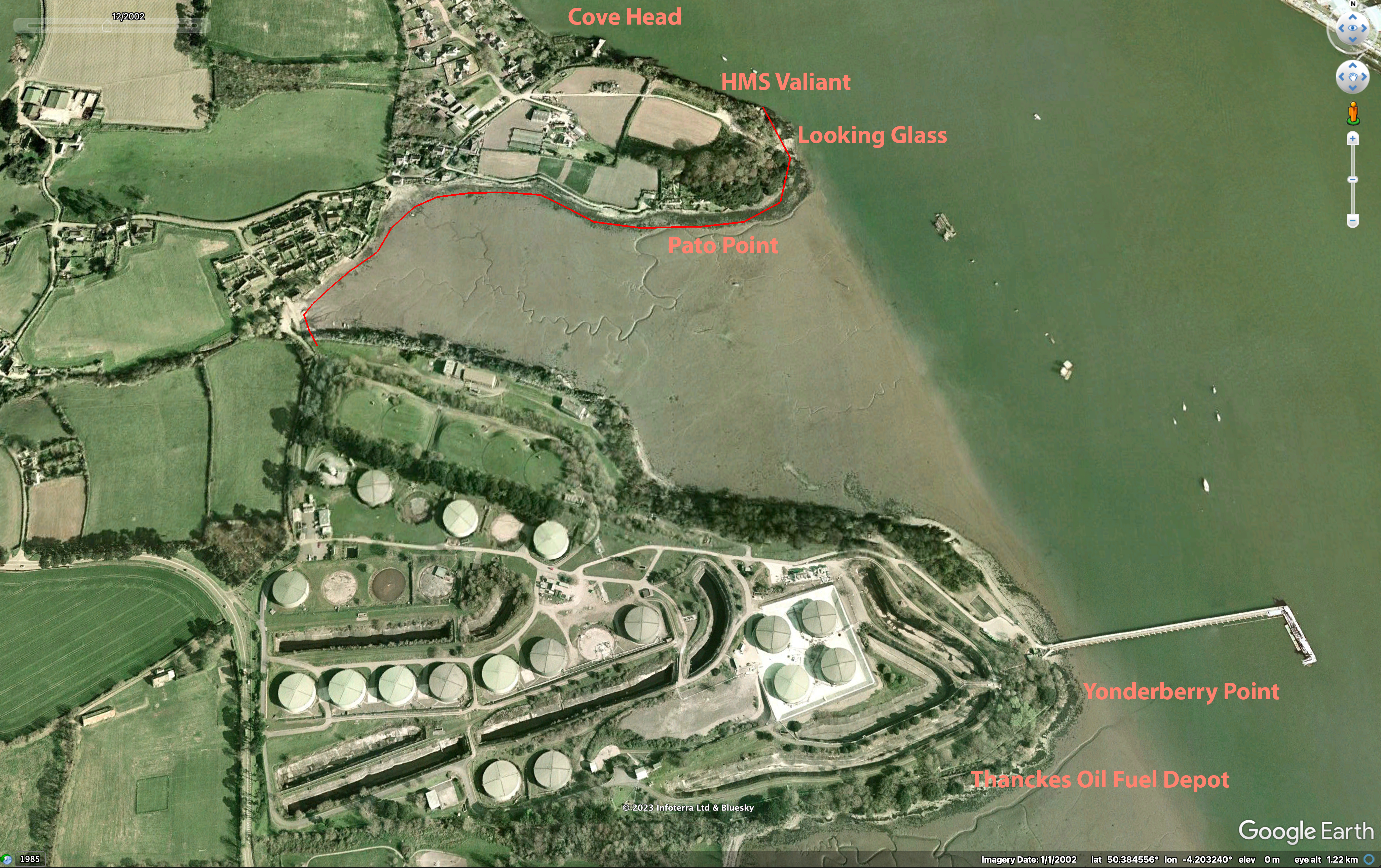
Building and commissioning
On 17 September 1921 it was reported that the first completed tank, by the Motherwell Bridge Company, had been accepted by the Admiralty after completing a two week water test. Of the Admiralty's tanks, numbers 17 to 24, which were being erected by some 70 men under the direction of Mr Hitchcock, foreman of boilermakers, number 17 was finished and five were in the course of construction.
Tanks 25 to 28, were being erected by Messrs Clayton and Company at Yonderberry Point while a further six would be on the north side of Pengelley Hill, facing Wilcove. Their construction had been severely delayed after the plant was held up by a rail strike. Mr Gardner, manager, and his assistant, Mr Clapham, and sixty men were busy erecting them.
Pumping was expected to begin in two to three weeks time, under the supervision of Mr Trevithick, foreman of works. The oil carrier "War Brahmin" arrived at the beginning of October 1921 from Trinidad and on Monday October 10th 1921 it was placed alongside the hulk HMS "Valiant" in preparation for discharging the first cargo of oil. Each of the three bodies responsible for the construction of the tanks had one tank that had completed the water test and was ready to receive its oil. But things did not go well. For what were described as 'a variety of causes' a week later no oil had reached the tank. Soon after pumping had started a large iron pipe burst at Pato Point and defects in the pipes were also discovered at the bottom of Pengelly Hill. It was suggested that either the pipes were too small to stand the pressure or the gradient of Pengelly Hill was too great to allow the oil to ascend the hill. Pumping was re-started on October 20th 1921 but the small size of the pipes meant that by Monday October 31st only 1,000 tons had reached the tank, which had filled the tank to a height of only 15 feet. It would be another week before the job was completed.
On Monday November 21st 1921 it was being reported that the "War Brahmin" consignment had not quite filled the first tank and that another oiler, the "War Sirdar", was now alongside discharging about 4,500 tons into a second tank.
Below we reproduce the relevant reports taken from the Western Morning News, 15 February 1922. [Thanks to Clifford Trethewey]
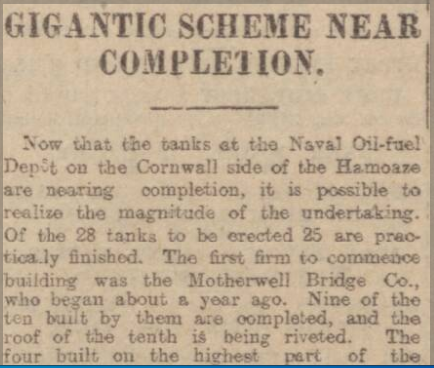

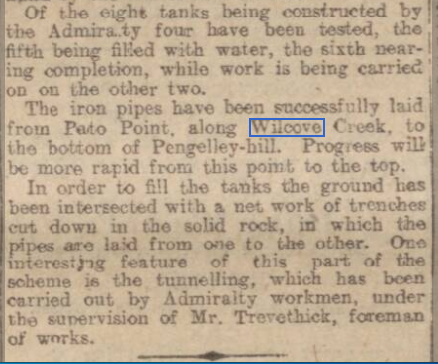
The naval requirement for oil instead of coal
The large number of tanks is clearly a reflection on the size of the Royal Navy after the defeat of Germany in World War 1. It was the largest naval fleet in the world and they all needed fuel.
From the beginning of the eighteenth century, the presence of extensive coal supplies in Great Britain had provided the country with a big economic and military advantage. Coal had been the fuel for the boilers in steam-driven warships since the mid-nineteenth century when it was cheap and plentiful. But, there were many disadvantages from its use. The process of coaling ship was dirty, disruptive and time-consuming, and involved most of the ship’s company to shovel mountains of coal from quayside into the bunkers. In contrast, fuelling with oil was achieved with far fewer men and was much quicker. Oil could be stored in tanks in the bottom of the hull and this gave better stability thanks to its lower centre of gravity; coal storage was much higher up in the ship. So oil was quickly recognised as the better fuel and new facilities were needed to store it. [Richard Burniston]
The site at Thanckes was adjacent to the river and high enough to give a good head of pressure.
Need for a jetty at Yonderberry
The aerial photograph below was taken in 1942 and there is no sign of a jetty on the Yonderberry point since it was not constructed until 1953-55.

Clearly the means of sending the oil to the tanks and retrieving it from then was still a much under-developed procedure. We have seen from Moseley's research that pumping direct from ship to tank was problematic, not least because of the lengths of pipe that were needed. The plan of the facility shows a fixed pipeline of 14-inch (35 cm) diameter around the foreshore from the short pier where a pumping ship called HMS Valiant was moored, across Whitehall and Looking Glass, around the beach to Wilcove and thence into the Thanckes site where it could then be dispensed to the appropriate tanks. This situation prevailed until after WW2 when it was decided to build the Yonderberry jetty.
There must have been much spillage of this thick, glutinous, black mass that could barely be described as a liquid. Furnace Fuel Oil (FFO), Heavy Fuel Oil (HFO) or Bunkers as it was known, was the residue left after the lighter fractions of petrol and diesel had been removed during the refining process. It seems that it was not until 1953 that work began to build the jetty at Yonderberry Point; it was finished by 1955.
More about HMS Valiant
HMS Valiant was laid down on 1 February 1861 by Westwood, Baillie in Cubitt Town, London. This company went bankrupt which delayed the ship's launching until 14 October 1863. Valiant was not commissioned until September 1868, nearly five years after she was launched. After Valiant was commissioned she became the First Reserve guard ship in Southern Ireland, where she remained until 1885, an experience unique among the British ironclads, although she did have one break to have new boilers installed. From June to August 1878 the ship sailed up the Dardanelles under the command of Admiral Hornby. On 20 July 1884 Valiant was accidentally rammed by the ironclad HMS Defence in Lough Swilly, damaging her hull and tearing off her boats, davits and fittings on one side of the ship. Valiant was paid off in 1885, and saw no further front-line service; lying for thirteen years in a partially dismantled state at Devonport. In 1897 she was assigned to stoker training. She was offered for sale in 1922, but there were no takers so that she was converted into a floating oil tank in 1926 (note that this dates conflicts with evidence above) and towed to Hamoaze, where she remained until 1956. Valiant was sold in that year to Belgian ship breakers and towed to Bruges on 8 December 1956. [Wikipedia: HMS Valiant 1863]
HMS Defiance
After WW1 when the Royal Navy was at its greatest strength, there were many warships that entered 'retirement'. Fortunately, there was plenty of space for deep water moorings in the Hamoaze and its surroundings. Just north of the Wilcove peninsula the river Lynher offered such moorings and became home to a number of warships, manned by crews for training purposes, many of who lived ashore, and needed constant access. One of the best known of these old ships was HMS Defiance.
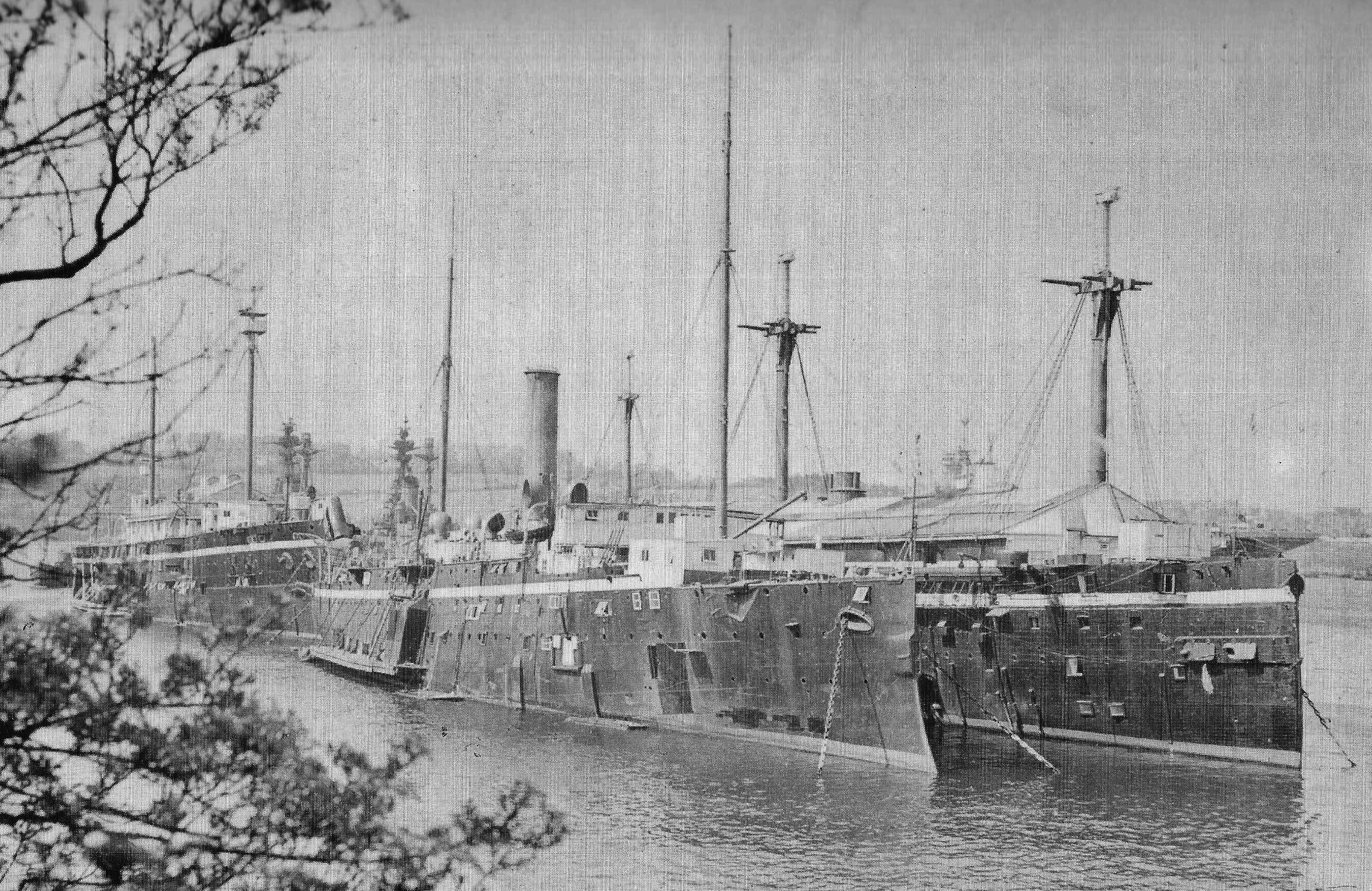
HMS Valiant was moored to a point in deep water about 200 m east of the jetty at Cove Point (below), which itself was used as a convenient landing for naval personnel accessing the hulks moored nearby. It was from HMS Valiant that oil was pumped to and from Thanckes Oil Depot. This photo looks north, up the River Tamar towards the two bridges. Thanckes is to the south on the right.

Wartime Damage
In 1941, some tanks of the OFD caught fire during an attack by German aircraft. Fortunately, it did not put the facility out of action.
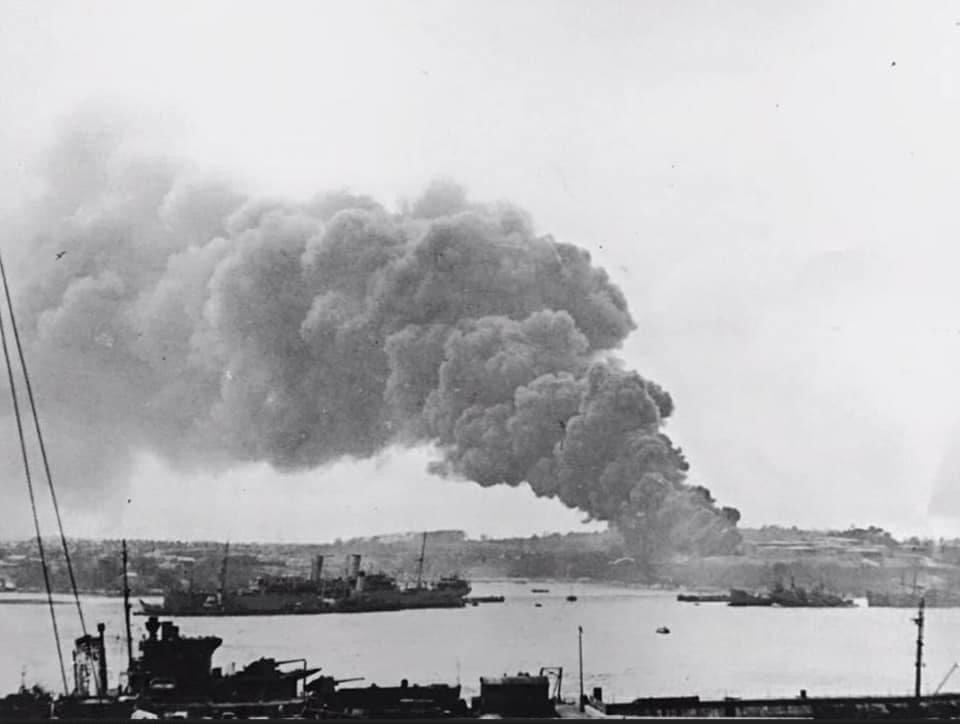
A theory of the early history of Wilcove
The images reproduced below are out of copyright and reprooduced under a Creative Commons licence from The National Library of Scotland.
We note with interest that even though we are certain that Thanckes OFD was built in the 1920s, no description of it appeared on official maps until the Yonderberry Jetty was constructed in the mid 1950s. This was probably due to military secrecy in the wartime period.
The first map is an Ordinance Survey (OS) map, published in 1866 from a survey in 1856. The second map is a similar OS map from 1946 that was supposedly 'amended' in 1938, but shows no trace of the OFD or other changes that had been present for over 20 years.
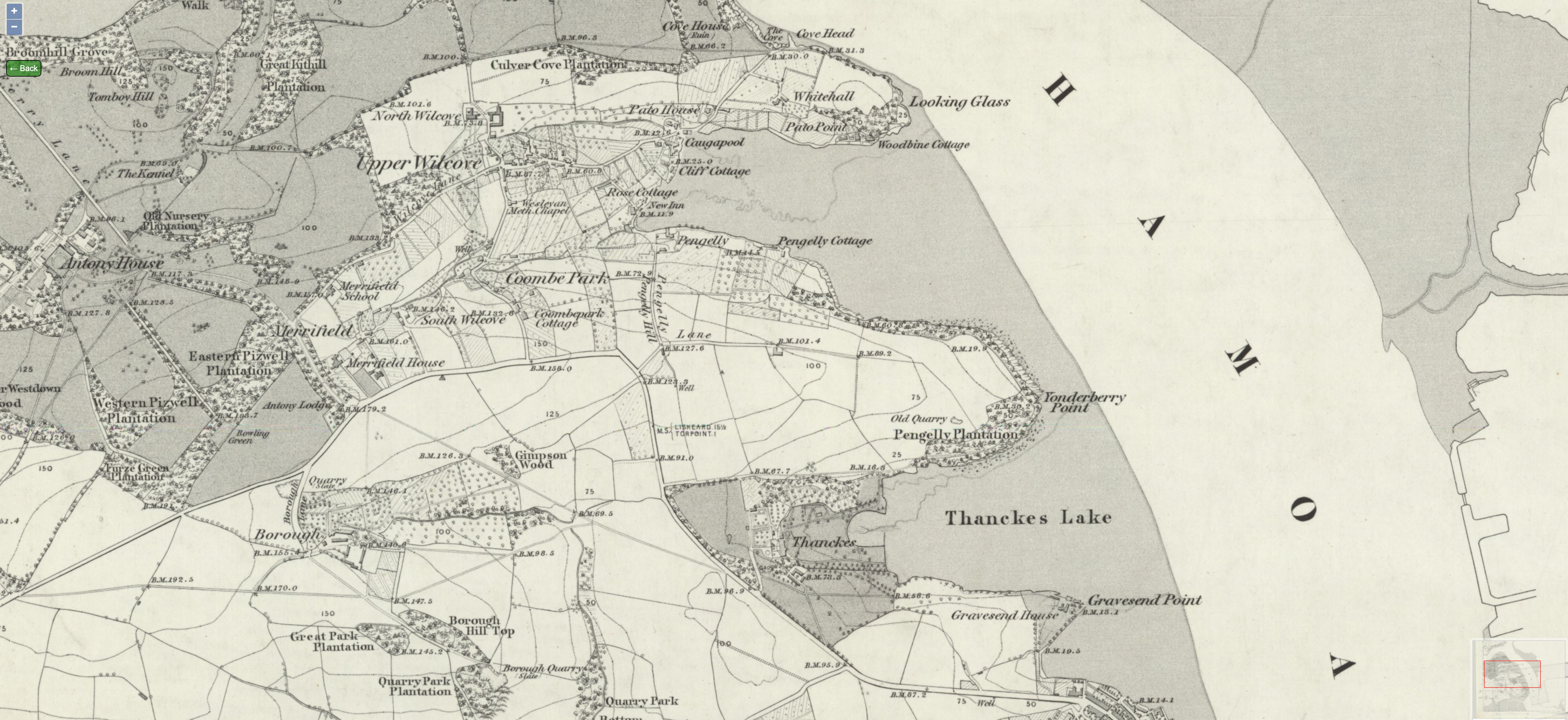
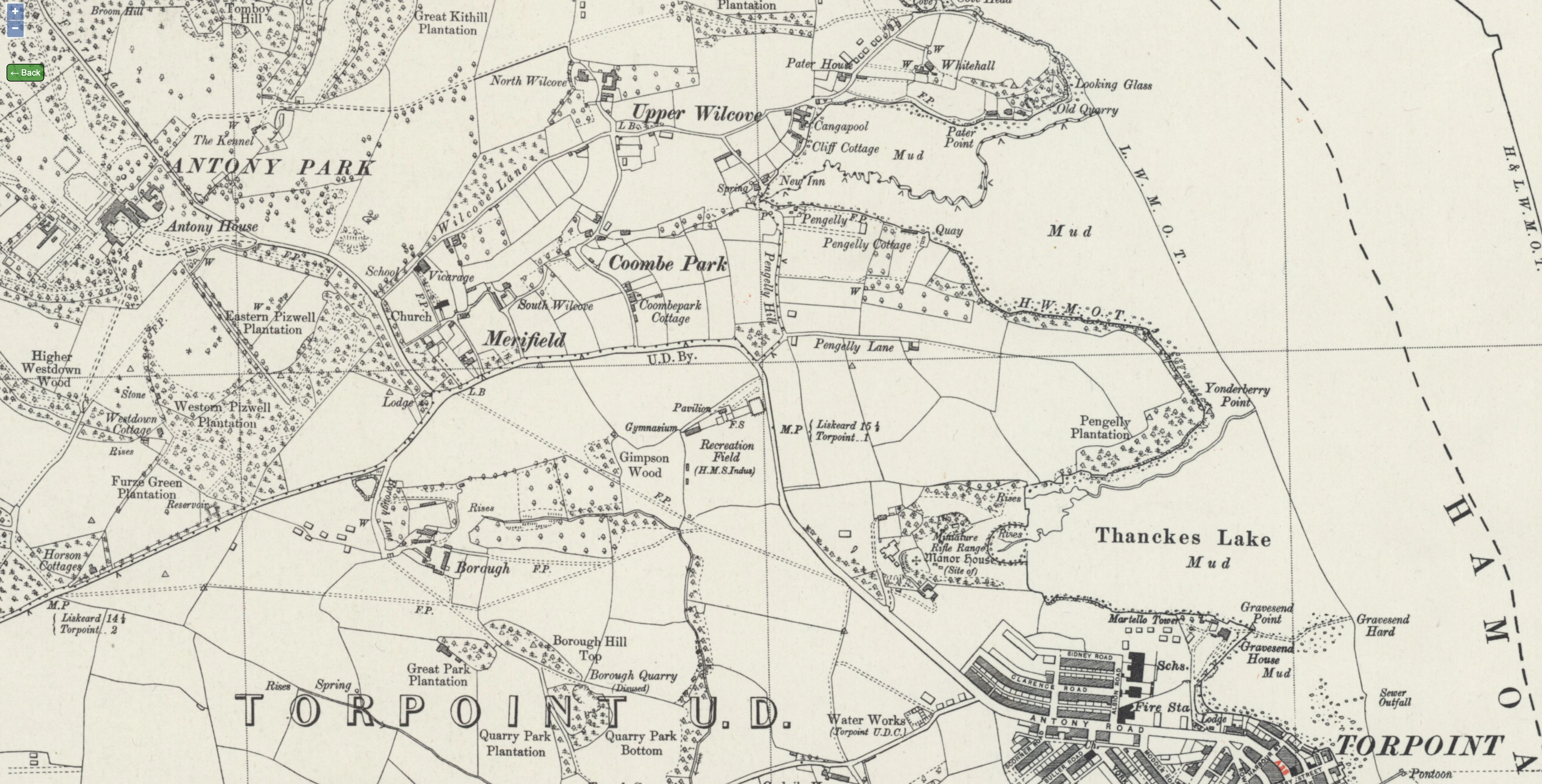
Although the name Thanckes eventually prevailed, the frequency with which the name Pengelly occurs on these early maps is representative of the very early settlement of the locality by the Pengelly family. Indeed, it is possible that a small community grew up around the Pengelly House and the farm that was created to support it. The need for agricultural workers may have led to the creation of the village of Wilcove, even perhaps before the establishment of the Carew estate at Antony. The desirability of a route to cross the river to Weston Mill, Devonport and Saltash opened up the route down Pengelly Hill where, at the bottom, a boat could be kept. At first, it was a family convenience that later grew into an irregular ferry service for all travellers. The early presence of the New Inn on the foreshore indicates the popularity of this site as a simple ferry crossing, centuries before Torpoint was developed. Once again, we should remember that more than five centuries ago the amount of farming history had been much less and the cove would have had far less silt making it much more navigable.
The presence of public tracks and other rights of way that exist today is well known to derive from routes used in earliest times. It is likely therefore that the tidal tarmac road that still exists as far as Pato Point was instigated in times when the Wilcove creek was used for access to river traffic. It is clear from the images on this page that, as the mud content of the cove increased, access to the boats at all tides followed the course where there was most water. The stream that takes water out of the creek has always been on the north side. All of this common sense practice would have created the now-mettled route along the foreshore as far as Pato Point.
As the build up of silt increased the difficulty of access by boats (and the boats became bigger) the desirability increased for finding a better access point with deeper water. Cove Head then came into use for, on this northern side of the peninsula, the water depth remained high. Later again, this deep water allowed the establishment of a mooring position for HMS Valiant, whilst the Navy made even greater use of the small jetty now built at Cove Head to access the hulks such as HMS Defiance moored in the Lynher.
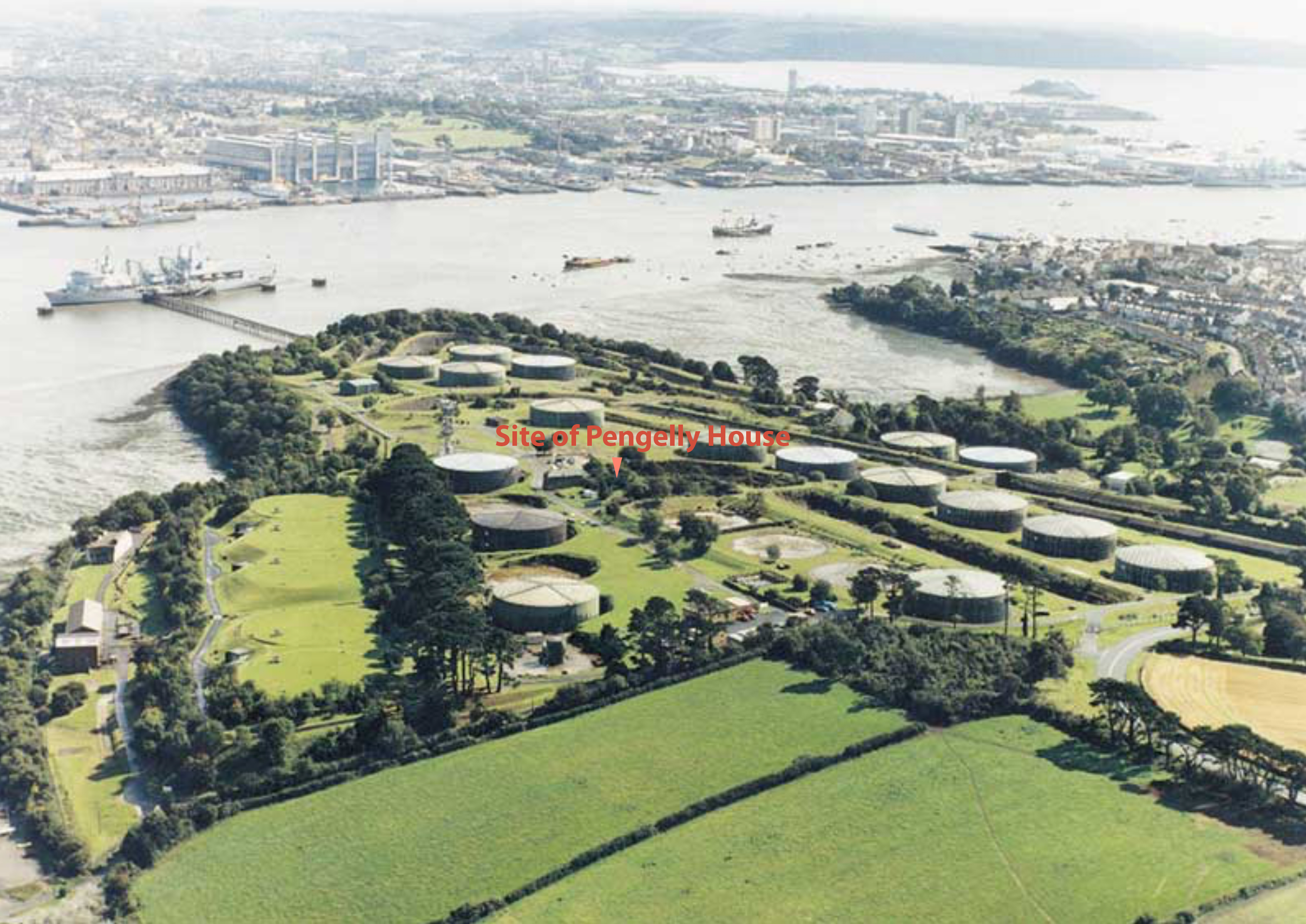

In the aerial view of Wilcove shown above I have indicated the positions of the key places where early activities in this history took place.

The SS Lady Beatrice moored on the first jetty to be built on Yonderberry Point. Very little is known about this structure. Because of wartime, it was very rare for photographs to be taken and maps were not re-drawn since the 1930s until well into the 50s. We must assume that this facility occupied the position later taken by the oil jetty that forms the main part of this site. At this time, probably in the late 1940s or early 50s, with oil still being pumped around from Wilcove, it was necessary to transport personnel efficiently to Yonderberry from the Plymouth side. It's role as a landing stage is clear.
Acknowledgements
The author, Ken Trethewey, wishes to acknowledge the inspiration for this work from my friends at the Torpoint Archives and Heritage Centre. A particular debt of gratitude is due to the late Cliff Cooper, as well as the research of local historians Jim Broad and Sid Pickering.